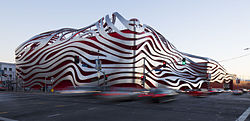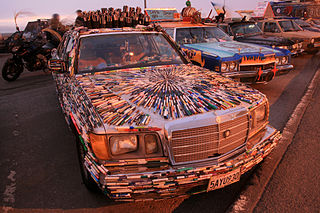
An art car is a vehicle that has had its appearance modified as an act of personal artistic expression. Art cars are often driven and owned by their creators, who are sometimes referred to as "Cartists".
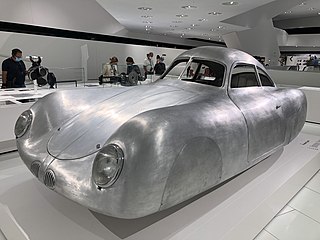
The Porsche 64, also known as the Type 64 and Type 60K10, is considered by many to be the first automobile from what was to become the Porsche company, and a true design precursor to the post-war production model.

Three Chrysler Imperial Parade Phaetons were produced in 1952 by Chrysler as ceremonial vehicles. They were styled by Virgil Exner and were in many ways a preview of the new "100 Million Dollar" styling that would debut in 1955 on the newly separate Imperial marque and on other full-size Chrysler Corporation Cars.

An auto show, also known as a motor show or car show, is a public exhibition of current automobile models, debuts, concept cars, or out-of-production classics. It is attended by automotive industry representatives, dealers, auto journalists and car enthusiasts. Most auto shows occur once or twice a year. They are important to car manufacturers and local dealers as a public relations exercise, as they advertise new products and promote auto brands. The five most prestigious auto shows, sometimes called the "Big Five", are generally considered to be held in Detroit, Frankfurt, Geneva, Paris and Tokyo. Car enthusiast communities along the historic U.S. Route 66 are credited with general popularization of car meets, including ethnic groups such as the Hispanos of New Mexico, Chicanos, and Mexican-Americans of the Southwestern United States; lowrider, high technology, electric vehicle, and other enthusiast show, are popular in Los Angeles, Las Vegas, Albuquerque, San Francisco, and Chicago for this reason.
Earle C. Anthony was an American businessman and philanthropist based in Los Angeles, California. He worked in broadcasting and automobiles and was also a songwriter, journalist and playwright.

America on Wheels is an over-the-road transportation museum in Allentown, Pennsylvania.
Ohrbach's was a moderate-priced department store with a merchandising focus primarily on clothing and accessories. From its modest start in 1923 until the chain's demise in 1987, Ohrbach's expanded dramatically after World War II, and opened numerous branch locations in the New York and Los Angeles metropolitan areas. Its original flagship store was located on Union Square in New York City. It maintained administrative offices in Newark and in Los Angeles. The retailer closed the Newark offices in the 1970s. Paul László designed the Union Square store as well as many of their other stores.

The Automotive Building is a heritage building at Exhibition Place in Toronto, Ontario, Canada, containing event and conference space. In the 1920s, as a result of burgeoning interest in automobiles, additional exhibition space for automotive exhibits during the annual Canadian National Exhibition (CNE) was needed. A design competition was held, and the winning design was submitted by Toronto architect Douglas Kertland. The building opened in 1929, and the "National Motor Show" exhibit of automobiles was held in the building until 1967. It was also used for trade shows. When it opened, it was claimed to be "the largest structure in North America designed exclusively to display passenger vehicles". During World War II, the building was used by the Royal Canadian Navy and named HMCS York. After the end of automotive exhibits at the CNE, the building was used for other CNE exhibits and continued to be used for trade shows.

The Jaguar XKSS is a road-going version of the Jaguar D-Type racing car, initially built in 1957. Only 16 were built and sold at the time. Nine chassis were destroyed in a factory fire in 1957 before they could be completed. In 2016 Jaguar announced that a small production run of nine "continuation" XKSS reproductions would be hand-built to the original specifications to complete the originally scheduled run of 25.
Harold James Cleworth is an automotive artist.
Robert Einar "Pete" Petersen was an American publisher who founded the Petersen Automotive Museum in 1994.

The Indianapolis Motor Speedway Museum is an automotive museum on the grounds of the Indianapolis Motor Speedway in Speedway, Indiana, United States, which houses the Indianapolis Motor Speedway Hall of Fame. It is intrinsically linked to the Indianapolis 500 and Brickyard 400, but it also includes exhibits reflecting other forms of motorsports, passenger cars, and general automotive history. In 2006, it celebrated its 50th anniversary. The museum foundation possesses several former Indianapolis 500 winning cars, and pace cars, and they are regularly rotated onto the display floor exhibits.
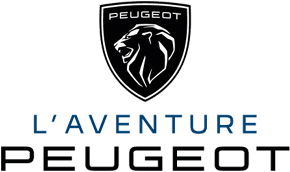
The Musée de l'Aventure Peugeot is a historical museum devoted to the Peugeot automobile business. The museum was founded by members of the Peugeot family, opening in 1988 across the road from the company's huge industrial site at Sochaux.

The Mullin Automotive Museum is a privately owned automobile museum in Oxnard, California, US. Established in 2010, it displays the personal car collection of businessman and philanthropist Peter W. Mullin. The museum has a large collection of vintage Bugattis, and many of the cars are fully restored and able to be driven. After founder’s death in September 2023, it was announced that the museum will be closed on February 10, 2024.
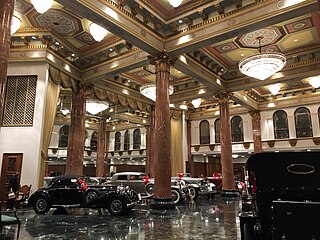
TheNethercutt Collection is a multi-storied museum and car collection complex located in Sylmar, California. It was founded by J.B. Nethercutt in 1971 and its centerpiece is the prestigious automobile collection of the Nethercutt-Richards family that contains over 250 cars, nearly all of which J.B. originally collected and owned. It is widely regarded as one of the greatest car museums in the world.§
The Revs Institute is an automotive museum located in Naples, Florida. The Revs Institute is a nonprofit organization specializing in automobile history, research and related educational programs. The Revs Institute houses the Miles Collier Collections of over 100 significant automobiles built between 1896 and 1995, including some of the rarest cars and race cars in the world. It also has one of the largest specialized automotive libraries in the world. A 12,000-square-foot workshop is also dedicated to auto restoration and the development of innovate ways to care for antique machinery.

The Corwin Getaway is a compact mid-engined sports car that was developed and built in Los Angeles, California in the mid to late 1960s. Only a single example survives. The Getaway was created by African-American photographer and designer Cliff Hall, who wanted it to serve as both an inexpensive, agile city car suited to Los Angeles driving conditions, and a source of reliable, well-paying jobs that would allow Black families in Los Angeles to build wealth.
Clifford Augustus Hall was a native Angeleno and photographer who documented many parties and celebrations in some of the city's wealthiest neighborhoods, and shot images of the riots that occurred in the city in 1992. He also conceived of and designed a car that he hoped would be both an inexpensive, agile city car suited to Los Angeles driving conditions, and a source of reliable, well-paying jobs that would allow Black families in Los Angeles to build wealth.
Jesse Valadez was a Mexican American lowrider and artist based in East Los Angeles who became known as a major figure in lowriding, a cultural practice among Chicanos that he helped pioneer. He was a founding member of the Imperials car club and designed the famous Gypsy Rose lowrider in the 1970s, which went on to make international waves for lowrider culture, boosted by its feature on the show Chico and the Man.
